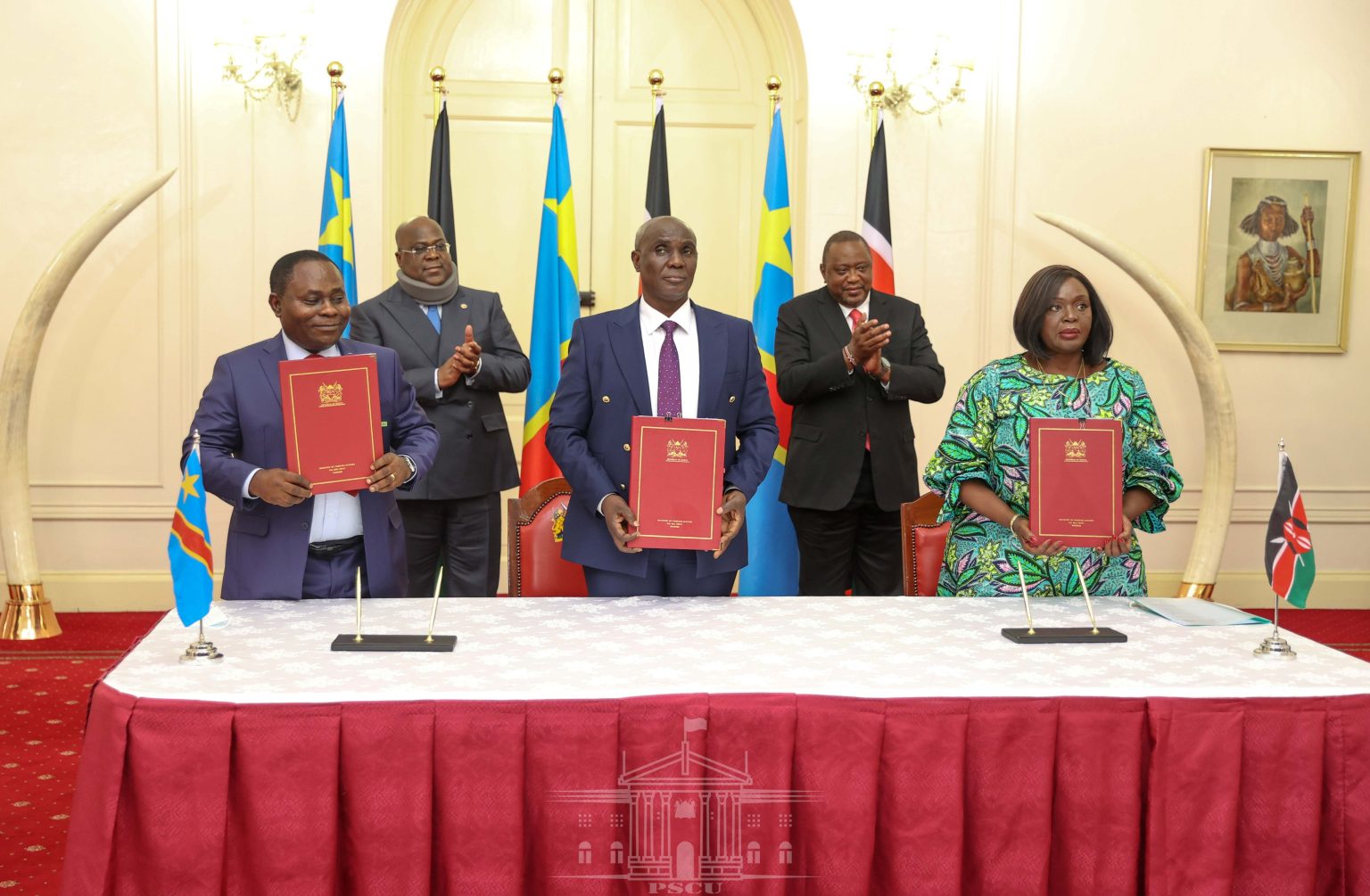- The EAC is now a coast to coast economic bloc
- The resource-rich DRC has added a boost to the EAC by bringing its wealth to the community
- Landlocked countries in the EAC now have another coastal gateway in addition to the East African gateways of Kenya and Tanzania
As east meets west, the East African Community (EAC) is now a coast to coast economic bloc in what could be a genius political organisation.
This fete has been made possible with the latest joining of the EAC by the Democratic Republic of Congo (DRC). The event saw the bloc add 80 million people to its economy. In addition, the resource-rich DRC has added a boost to the EAC by bringing its wealth to the community.
For starters, this is good news for landlocked countries. It means that the landlocked countries in the EAC including Uganda, Burundi, Rwanda and South Sudan now have another coastal gateway away from the East African one in Kenya and Tanzania.
In addition, all the partner states have better bargaining power when it comes to trading with other blocs on the continent or internationally.
Continent-wide, fully implementing the AfCFTA will increase intra-African trade with the elimination of duties. Projections show that by just reducing non-tariff barriers (NTBs), intra-African trade could double.
Fully implementing the AfCFTA will lead to an increase in intra-African freight demand by 28 per cent by 2030. The demand for rail, road, air and maritime freight will increase by 8 per cent, 22 per cent, 28 per cent and 62 per cent respectively.
In East Africa, the AfCFTA offers immense opportunities. According to the United Nations Economic Commission for Africa (ECA), the demand for freight services and infrastructure is projected to rise.
While the East Africa region still lags behind West Africa, it nonetheless has immense potential with the AfCFTA.
ECA notes that the largest demand for vessels to support AfCFTA is within North Africa (35 per cent); demand from North to East Africa is 15.2 per cent and from North to West Africa is 11.4 per cent. Also, East Africa is among the regions that need to upgrade sections of their roads to cope with increased freight generated by AfCFTA.
Generally, basically, all the transport infrastructure in East Africa will need an upgrade ranging from maritime, rail, road and air.
The DRC’s more than 90 million people boost the EAC’s population to 270 plus million people creating a sizeable economy. The Central African nation has more than 1,100 listed minerals and precious metals and 80 million hectares of arable land, so big is the country that five EAC Member States are its neighbours by virtue of sharing a common border between them.
The DRC brings to seven Partner States in the EAC. The regional intergovernmental organization is headquartered in Arusha in the United Republic of Tanzania.
An estimated 300 million people live in the EAC, with urban residents making up over 22 per cent of the total. According to the EAC Statistics for 2019, its realization holds tremendous strategic and geopolitical significance as well as promising possibilities for the revitalized and revived EAC.
The EAC, one of the world’s fastest-growing regional economic blocs, is expanding and enhancing its cooperation with its Partner States in a variety of vital areas for mutual benefit. Political, economic, and societal factors all play a role.
As seen by the excellent progress of the East African Customs Union, the foundation of the Common Market in 2010 and the adoption of the East African Monetary Union Protocol, the regional integration project is currently in full motion.
Current state of affairs in the EAC
East African authorities and citizens are working hard to create a strong and long-lasting economic and political bloc in the region, as evidenced by the rapid advancement of plans for an East African Federation.
The DRC has already got things in motion by signing trade deals with other East African countries following its accession into the EAC.
In Kenya, soon after the treaty was signed, bilateral collaboration in agriculture, livestock, and fisheries between the two countries was signed.
Crop development and promotion, agricultural and livestock research as well as animal health and production are just some of the sectors covered by the agreement.
Agricultural commodities marketing, aquaculture, and the development of children in agriculture programmes like 4K clubs are other areas of focus.
Opening up the EAC to trade, free movement of people
EAC’s second Regional Integration milestone, the Common Market, has been in place since 2010, in accordance with the EAC Treaty. In January 2010, the Customs Union became completely operational.
The EAC Partner States must maintain a liberal approach toward the four freedoms of movement for all factors of production and two rights between themselves in order to speed up economic growth and development.
These rights and freedoms are:
- Goods can move freely between member countries
- Persons’ Right to Free Movement
- Workers’ Right to Free Movement and Establishment
- Having a place to live
- Allowance for the Movement of Products and Services
- Capital Flows Without Restrictions
The EAC Common Market is based on the following community-wide operational principles:
Other Partner State nationals are not subject to any form of discrimination based on their country of origin; they are treated equally, and the other Partner States’ affairs are kept open and transparent.
The conglomeration of the EAC will offer a market-driven economy of close to 0.3 billion people whose Gross Domestic Product (GDP) will surpass US$243 billion.
Trade is set to increase immensely following the recent milestone and with improved regional infrastructure connectivity, the EAC can only get better at unlocking available trade opportunities.
Read: Berbera Port to be a game-changer for landlocked Ethiopia
